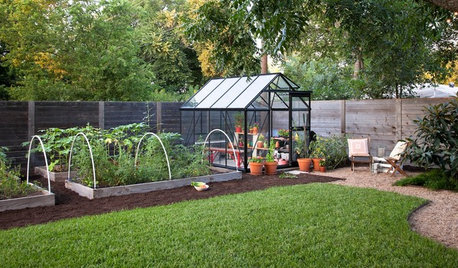bought a house - plan of action for weedy lawn
m_taggart
12 years ago
Related Stories

EDIBLE GARDENSA Formerly Weedy Lot Now Brims With Edibles and Honeybees
Photographers transform their barren backyard into an oasis filled with fruit, vegetables, honey, eggs and more
Full Story
GARDENING GUIDESHow to Prep Your Ground for a Healthy New Lawn
Seed or sod that falls on weedy, lumpy soil is a wasted effort. Follow these steps to ensure that your new lawn will thrive
Full Story
FRONT YARD IDEASBefore and After: Front Lawn to Prairie Garden
How they did it: Homeowners create a plan, stick to it and keep the neighbors (and wildlife) in mind
Full Story
EARTH DAYThe Case for Losing the Traditional Lawn
Work less, help the environment and foster connections by just saying no to typical turf
Full Story
GARDENING GUIDESHow to Switch to an Organic Landscape Plan
Ditch the chemicals for a naturally beautiful lawn and garden, using living fertilizers and other nontoxic treatments
Full Story
LANDSCAPE DESIGNGet Along With Less Lawn — Ideas to Save Water and Effort
Ditch the mower and lower your water bill while creating a feast for the eyes with diverse plantings and gathering places
Full Story
MOST POPULARMeet a Lawn Alternative That Works Wonders
Carex can replace turfgrass in any spot, is low maintenance and adjusts easily. Add its good looks and you’ve got a ground cover winner
Full Story
GREAT HOME PROJECTSHow to Replace Your Lawn With a Garden
New project for a new year: Lose the turfgrass for energy savings, wildlife friendliness and lower maintenance
Full Story
LANDSCAPE DESIGN7 Low-Maintenance Lawn Alternatives
Turf isn't the only ground cover in town. Get a lush no-grass lawn with clover, moss and other easy-care plants
Full Story
LAWN ALTERNATIVESStop Fighting the Patchy Lawn!
Here are 3 situations where a garden may be a better idea than more turfgrass
Full Story





dchall_san_antonio
grassboro
Related Professionals
Marco Island Landscape Architects & Landscape Designers · Williamsburg Landscape Contractors · Biloxi Landscape Contractors · Kearny Landscape Contractors · West Orange Landscape Contractors · Northlake Landscape Contractors · Selma Landscape Contractors · Ridgewood Fence Contractors · Castle Rock Fence Contractors · Goodyear Fence Contractors · Hull Fence Contractors · Palm Harbor Fence Contractors · Park Ridge Fence Contractors · Saratoga Springs Fence Contractors · Angleton Fence ContractorsKimmsr
m_taggartOriginal Author
grassboro
m_taggartOriginal Author
dchall_san_antonio
gunnersm8
Kimmsr
grasshole
watchnerd
Kimmsr